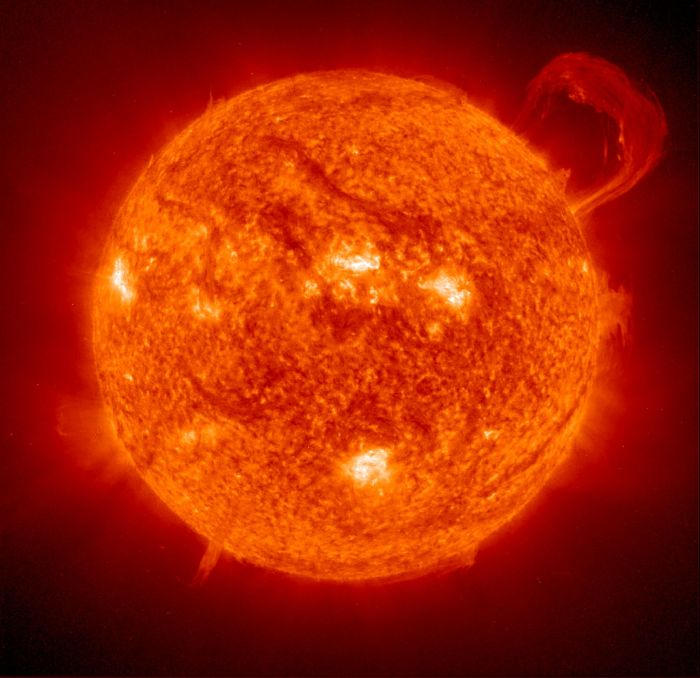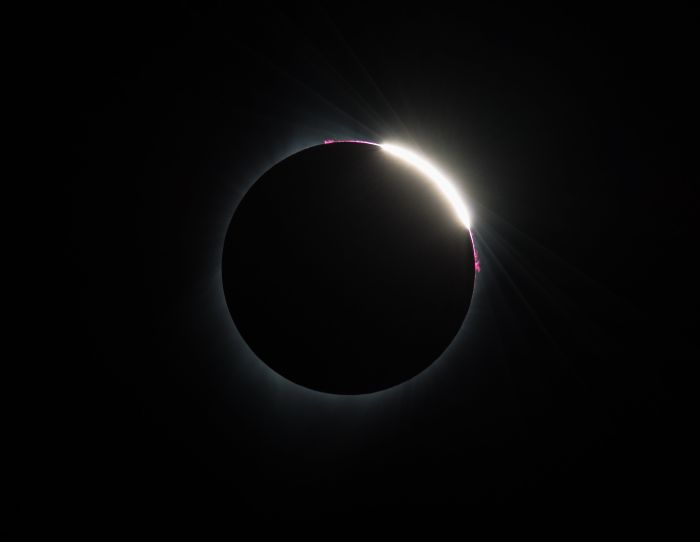A Glimpse of the Sun’s spectacular phenomenon: Solar Prominence
A Glimpse of the Sun’s Spectacular Phenomenon: Solar Prominence
HUNG Fan-yiu
July 2024
Solar prominences are spectacular and strange looping structures composed of plasma. They are bound by invisible magnetic fields, extend from the Sun’s surface to the corona (the outermost layer of the Sun’s atmosphere) and can tower tens of thousands of kilometers! Since the plasma that makes up a solar prominence is often cooler and denser than the surrounding plasma, it blocks the light emitted from the Sun's underlying surface, causing solar prominences to appear darker than the surrounding environment. This is why solar prominences observed on the Sun disk are also called “filaments”.

Figure 1 A Solar prominence is a looping structure extending from the Sun’s surface (top right of image). (Credit: ESA/NASA/SOHO)
Solar prominences can be classified into active prominences and quiescent prominences. Active prominences typically form within active regions characterized by strong magnetic fields, with lifetimes spanning several hours to a few days and even exhibiting dramatic changes during observation. Quiescent prominences are more stable than active prominences. They typically persist for months and form at higher Sun latitudes where active regions are less common. When a solar prominence erupts in tremendous explosions, it will give rise to coronal mass ejections that eject billions of tons of plasma into space. Geomagnetic storms may then occur on the Earth and affect our power and communication systems.
The optimal time to observe solar prominences is during a total solar eclipse. During this time, the Moon blocks the Sun's bright glare, allowing the beautiful prominences to stand out clearly against the dark sky. In addition, solar prominences can also be safely viewed using a telescope equipped with special filters that block the Sun’s visible light.

Figure 2 The image shows the reddish-pink solar prominences observed at the edge of the Sun during a total solar eclipse. (Credit: NASA/Aubrey Gemignani)
Scientists are still investigating the causes behind the occurrence and formation of solar prominences, hoping that studying solar prominences may help enhance understanding of the Sun’s magnetic field structure and distribution patterns, as well as the drivers of various space weather events.
References:
[1] “Solar prominences”, Duncan H Mackay, Oxford Research Encyclopedia of Physics, Oxford University Press, 2021.
[2] “Heated plasma and magnetic fields can create beautiful details”, National Aeronautics and Space Administration.
[3] “羲和号新成果发表!”,国家航天局。
[1] “Solar prominences”, Duncan H Mackay, Oxford Research Encyclopedia of Physics, Oxford University Press, 2021.
[2] “Heated plasma and magnetic fields can create beautiful details”, National Aeronautics and Space Administration.
[3] “羲和号新成果发表!”,国家航天局。